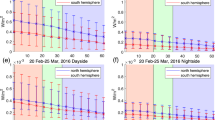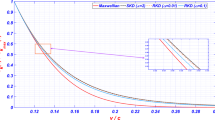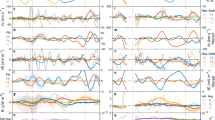Abstract
THE report in The Times of the discussion on wireless telegraphy at the British Association meeting in Dundee mentions the hypothesis—introduced apparently by Dr. Eccles—that several of the phenomena of the propagation of electric waves round the earth are largely influenced by the existence of an ionised layer in the atmosphere. The hypothesis seems analogous to, if not identical with, one made by several magneticians independently, with the object of explaining phenomena exhibited by the diurnal variation of the magnetic elements. This diurnal variation is now generally regarded as most probably due to electric currents in the upper atmosphere, and it has been suggested that the fact that the magnetic changes are normally larger by day than by night is due to an increased ionisation of the atmosphere due to sunshine.
This is a preview of subscription content, access via your institution
Access options
Subscribe to this journal
Receive 51 print issues and online access
$199.00 per year
only $3.90 per issue
Buy this article
- Purchase on SpringerLink
- Instant access to full article PDF
Prices may be subject to local taxes which are calculated during checkout
Similar content being viewed by others
Rights and permissions
About this article
Cite this article
CHREE, C. Wireless Telegraphy and Terrestrial Magnetism. Nature 90, 37 (1912). https://doi.org/10.1038/090037a0
Issue date:
DOI: https://doi.org/10.1038/090037a0



